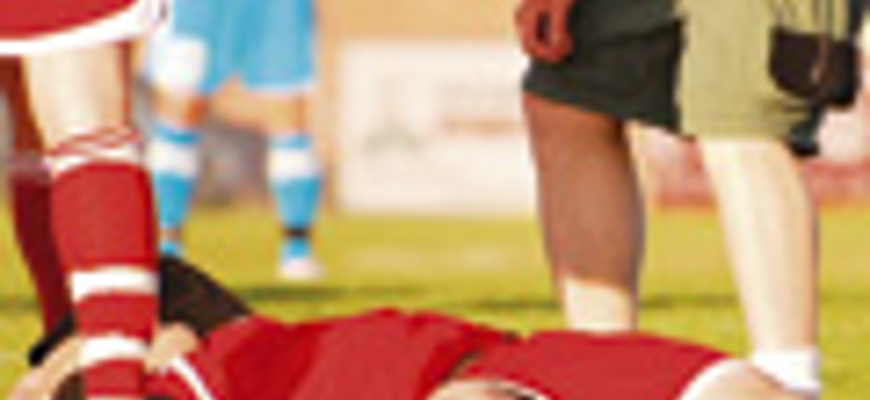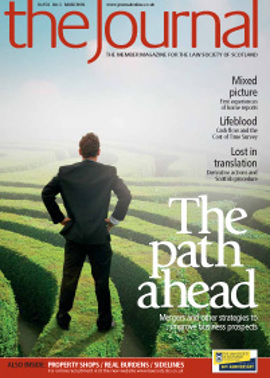All part of the game

The Court of Session has clarified the test to be applied with regard to the standard of care to be demanded of a participant in a sport that involves some inherent risk of injury. The long running debate surrounding whether the test would be one of “reckless disregard” or “gross negligence” is now at an end.
It is a basic principle of law that when competitors step onto the field of play they not only need to observe the laws of the particular game or sporting contest in question, but remain subject to the law of the land. Where a competitor injures another with intent, he or she is liable to be found guilty of assault, irrespective of the fact that the assault occurred during a sporting contest. However, in cases of negligence, as the duty of care owed requires to be assessed in the sporting context in which it arises, the application of the law has historically proven more complex.
The decision in Sharpe v Highland and Islands Fire Board [2007] CSIH 34 declares that the correct approach to determining the relevant standard of care accords closely with general neighbourhood principles on which the law of negligence is based. As Sharpe highlights, however, the sporting context may render it more difficult for pursuers to prove that the defender’s actions breached the standard of care.
Tackling the issue
The action arose from a mistimed tackle during a friendly football match between instructors and recruits at the training school. The tackle left one of the instructors (Sharpe) with a severe fracture of the leg. The action was raised against a recruit (McLean) and the fire board as being vicariously liable for McLean’s actions. The Inner House opined that the test to be applied in the context of sporting negligence is whether or not the competitor in question has committed an error of judgment that a reasonable competitor, being a reasonable man of the sporting world, would not have made.
Sharpe was found to have proved his version of the facts as regards the tackle – that he had been “high tackled” by McLean, who was showing his studs. However, the Inner House was unable to reach a decision as to whether, in the circumstances, a reasonable player would have attempted the tackle or whether, if they would, they would have been able to avoid colliding with the pursuer. The court noted that a reasonable football player is not a paragon who never makes a mistake, and that players are only liable for damages caused by errors of judgment or lapses of skill going beyond such as, in the stress of the circumstances, may reasonably be regarded as excusable. It concluded that, in the absence of reliable, detailed, skilled and objective eyewitness evidence, Sharpe had not been able to discharge the burden.
This was despite the fact that Sharpe led evidence from three players (two instructors and a recruit) who described the tackle as, among other things: “extremely mistimed”, “a dangerous and aggressive tackle”, “very reckless” and “unacceptable”. However, this evidence was disregarded, except as it related directly to the facts, because one of the witnesses was openly biased in his testimony and the court noted that the other witnesses used the term “reckless” without necessarily understanding its legal connotations.
Where was the camera?
This decision brings into focus the difficulty that arises in pursuing action for injury sustained in amateur sport. In the absence of video playback it may be difficult to find skilled and/or objective eyewitnesses to speak to the incident. Although the use of video is increasing for the purposes of analysis, the majority of amateur sportspeople, if not their professional counterparts, are likely to face an absence of such footage. Not all sporting events have 13 different cameras focusing on play such as in a Six Nations test at Murrayfield, courtesy of the BBC.
Eyewitnesses are likely primarily to be fans, coaches or players of either team. As was the case in Sharpe, amateur players or coaches might fail the tests of objectivity and/or skill. Professional or semi-professional players observing a professional game may be better placed. In another football case, Condon v Basi [1985] 1 WLR 66, the referee’s testimony was relied on. However, in Sharpe the court implied that this was only of weight as the referee in Condon was a “very experienced class 1 referee”. Furthermore, in Sharpe the referee did not even witness the tackle and as such it was irrelevant whether he might have been deemed to posses the requisite skill. The message is clear; if litigating an injury the quality of evidence must be compelling before the courts will impose liability.
In this issue
- Corporate governance in family businesses
- Que será, será….
- A matter of form in administrations
- You may have to be mad to work here
- No standing still
- A new regime for financial advice
- United we stand?
- Watch your local trend
- Cash flow: the five essentials
- Secure our future
- Opportunity lost?
- The kilt doesn't quite fit
- We can work it out
- Asset in recovery
- Law reform update
- Be your own money saving expert
- Skeleton crew
- Ask Ash
- Only half a step
- Learning experience
- Too late, too late?
- Variations and the three year rule
- Fruits of their labours
- Death of a claim
- All part of the game
- Scottish Solicitors' Discipline Tribunal
- Website review
- Book reviews
- Just whistle while you work
- Performance review






